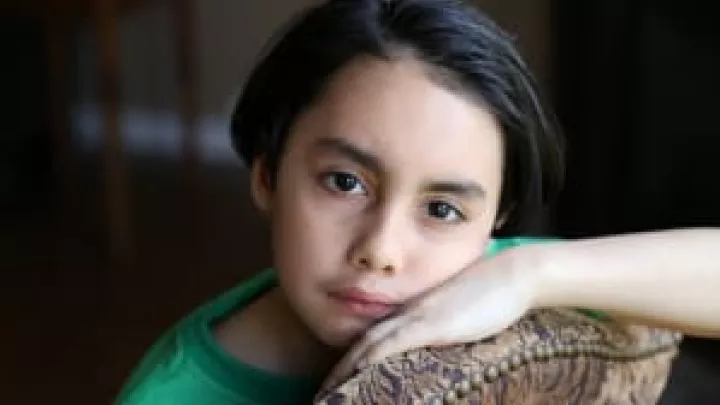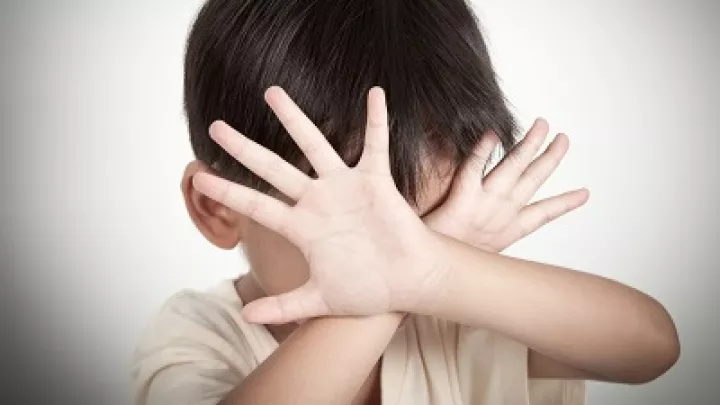
Obsessive-Compulsive Disorder: Is it hurting your child?
I love watching “The Big Bang Theory,” specifically the character Sheldon. He makes me laugh when he knocks on a door and says the name of the person he is visiting, and then repeats this action three times. He displays traits of obsessive-compulsive disorder (OCD). I will admit, after reading more about OCD, I can see some of the behavior patterns in myself. It is important to understand what repetitive behavior is acceptable, when interventions would help and what OCD is.
Obsessive-compulsive disorder is a disorder of the brain and behavior. Obsessions are recurrent intrusive thoughts that are not wanted and cause distress. Compulsions are repetitive behaviors or thoughts that may develop into rituals. They often occur after the obsessive thought and may develop as a way to cope or reduce the distressing thought. The compulsions may take up a lot of time and get in the way of activities. OCD causes severe anxiety in those affected.
The American Academy of Child and Adolescent Psychiatry (AACAP) states obsessive-compulsive disorder usually presents in teenagers and young adults, but it may also present in children. The prevalence is approximately 1-2 percent in the United States. It has been called the “hidden epidemic” because of the secretive and variable nature of symptoms. Obsessive thoughts and compulsive behaviors may change as the affected child grows and matures. OCD may run in families, or may present after a streptococcal bacterial infection.
Per the website KidsHealth, among kids and teens with OCD the most common obsessions include:
- Fear of dirt or germs
- Fear of contamination
- A need for symmetry, order and precision
- Religious obsessions
- Preoccupation with body waste
- Lucky and unlucky numbers
- Sexual or aggressive thoughts
- Fear of illness or harm coming to oneself or relatives
- Preoccupation with household items
- Intrusive sounds or words
These compulsions are the most common among kids and teens:
- Grooming rituals, including hand washing, showering and teeth brushing
- Repeating rituals, including going in and out of doorways; needing to move through spaces in a special way; or rereading, erasing and rewriting
- Checking rituals to make sure that an appliance is off or a door is locked, and repeatedly checking homework
- Rituals to undo contact with a “contaminated” person or object
- Touching rituals
- Rituals to prevent harming self or others
- Ordering or arranging objects
- Counting rituals
- Hoarding and collecting things of no apparent value
- Cleaning rituals related to the house or other items
According to the International OCD Foundation, many children with OCD are reluctant to share their symptoms because they are embarrassed or they don’t realize that what they are experiencing is unusual. Parents and other family members often may know a problem exists but may be unable to identify it or know how to respond and get help. Symptoms of OCD can be very similar to other psychological conditions (such as attention deficit hyperactivity disorder, autism spectrum disorders or other anxiety disorders), so it can be a challenge to help your child get the necessary care.
If some of the common obsessions and compulsions sound familiar, it is important to know effective treatment is available. OCD is usually treated with a combination of talk therapy (cognitive behavior therapy) and medication. A child psychiatrist—a medical doctor specializing in assessing and treating diseases of the brain and behavior—can diagnose and treat this condition.
Julienne Jacobson, MD, a child psychiatrist at Children’s Hospital Los Angeles, states, “Anxiety disorders, like OCD,usually present before adulthood. The treatment of OCD in children and teenagers is well-established and very effective,and the side effects are usually minimal. The psychiatrist will continue to monitor symptoms and medication effects periodically after the patient improves.”
Helpful hints for parents when discussing OCD with adolescents:
Make sure to know the difference between “normal” childhood routines and excessive ritualistic behavior or preoccupation with thoughts.
- Example: Bedtime rituals or collecting “special items” or lucky charms may provide a sense of security and comfort. It is only when these routines start to take up too much time and interfere with activities that OCD should be considered.
Be aware of changes in social interactions and confidence.
- Rituals and routines may start interfering with social and school functioning.
Stay open and ask questions.
- Asking non-judgmental questions may reassure your child he or she is not “crazy” or “weird” and help the child open up and see that it’s OK to talk about it.
Be open to discussing treatment options.
- Inform your child that help is available, and that you will arrange it. Assure your child that help should not be scary or interpreted as a way to “cure” OCD, but rather as a way for your child to better manage his or her disorder.
Use books, videos and other resources.
- It is often easier for a child to identify feelings in another person, such as a character in a story (like Sheldon in “The Big Bang Theory”). Sharing some of these stories can open the door to talking about feelings and fears your child may have,and can help introduce the concept of psychiatric treatment in child-friendly terms.


